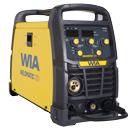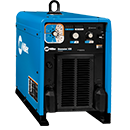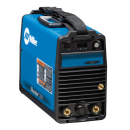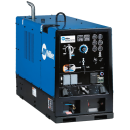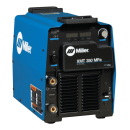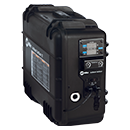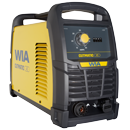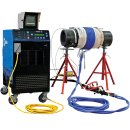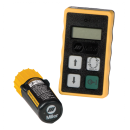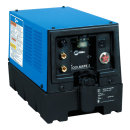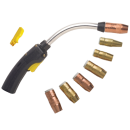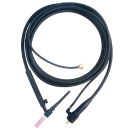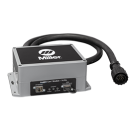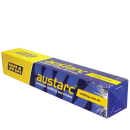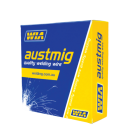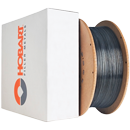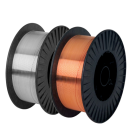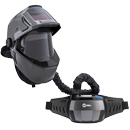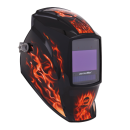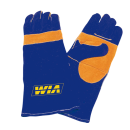Queensland engineering firm Starlight Engineering was contracted to assist with construction of a dredging pipeline from Brisbane Airport to the Brisbane River.
With difficult, swampy terrain and several creek crossings to make, the construction team had to be light and mobile, so anything that could reduce the weight of consumables would ensure the job could be completed quickly.
Materials for the pipeline were 450 Grade Chinese-made steel pipe with 30mm walls, which had to be welded and pushed into position, or welded in situ. A further constraint on the job was that the pipe could not be rotated to suit the welders, requiring them to negotiate difficult welding positions in the field.
Starlight Engineering sourced Hobart’s Fabshield XLR-8 flux-cored wire from Welding Industries of Australia (WIA) for the job. The decision was made knowing that XLR-8 would afford greater flexibility in the outdoor environment.
XLR-8 has a fast freezing slag, meaning that the weld pool solidifies faster. This means that welders working out of position around the pipe can achieve a better quality weld in a shorter space of time, allowing them to spend less time in uncomfortable positions. In quoting the contract and costing materials, the decision between using solid versus flux cored wire had a lot to do with the terrain of the job.
With all of the work to be done outdoors, and over a large area with the dredgeline spanning from the Brisbane Airport to a dredge ship at the port, the decision to use flux cored wire was based on the fact that welders would not need to repeatedly build shelters to protect the welding gas shields, or continue moving heavy gas cylinders along the pipeline.
With kilometres of dredge line to go through a diverse range of terrains, including swamps, river crossings, and a pass six metres above a water treatment plant, it was important to ensure the work crews would be as mobile as possible, and unhampered by unnecessary gear.
The other main reason for choosing flux cored wire for the dredge line contract was because of its higher level of deposition compared to other types of welding wire.
The design of the flux cored wire allows it to freeze quite quickly once it is laid into the joint, which means the wire can be run hotter, at higher amps (250-350A) for higher level of deposition with no messy running.
Less running means less cleaning of the welds, which means more time welders can spend getting on with the job.
High deposition was also an important advantage on this job as the pipework could not be rotated.
Due to the fact that there were kilometres of pipeline to weld together, turning the line would have been impossible, so welders had to weld around the pipeline, sometimes in trenches dug into the ground, and sometimes on scaffolding metres up in the air.
The flux cored wire is excellent for being able to weld in all positions, which was an advantage on this job. Welders were expected to get into difficult positions to complete welds in situ without rotating the pipe, so high deposition meant welders could do overhead work quickly in order to get out of those positions.
In addition, the self-cleaning nature of the flux-cored wire meant that Starlight’s welders would not have to be so meticulous with their preparation of the pipework for welding.
Starlight director Shannon pointed out that with flux-cored wire, the active weld can wash impurities out of the steel as the weld progresses, while producing its own gas shield to prevent unwanted oxidation.
The flux also performs an important cooling function, protecting the weld as it cools as well as helping to channel heat away from the weld.
This was a distinct advantage for Starlight, as the faster cooling ability meant that welding could be run at higher amps than would ordinarily be necessary for solid wire.
Higher amps translates to faster welding speed, and a faster way to complete the job on schedule.
Shannon said the pipeline was completed tightly on schedule, with only one week between the test run and the arrival of the dredge ship in harbour.






